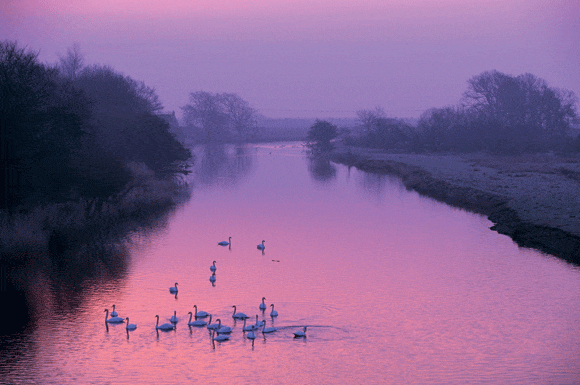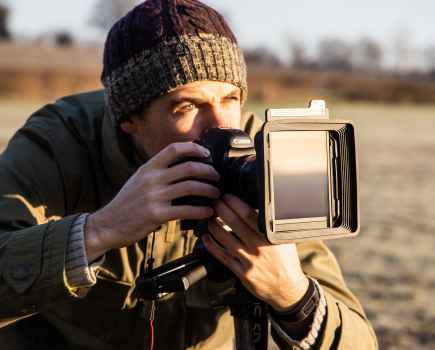
Winter landscape photo tips 1: Visualise
Successful landscape photographs are often the result of previsualisation of looking at an ordinary scene and imaging how it could be transform into something special.
This view of the River South Esk from the Bridge of Dun in Angus is normally quite unremarkable. Here’s what transformed it early one winter’s morning.
Winter landscape photo tips 2: Animation
Whether it is a person moving across a landscape, swaying trees or rushing water adds the first layer of extra interest to an image. Life in a photograph attracts attention in a way that inanimate objects fail to. These mute swans, occupying a “harmonious point” in the composition, reinforced the mood of tranquillity.
Winter landscape photo tips 3: Light
Visit this scene during the middle of the day and, even with swans, it is pretty unexciting. Highly descriptive, direct sunlight makes clear statements about objects but it is clinical and fails to create any atmosphere or ambiguity. Shooting east ensured that the colour of both sky and water dominated the scene.
Winter landscape photo tips 4: Colour
The blue sky behind me was reflected by the pale swans, setting up a subtle but insistent contrast with the warm hues all around. In physical terms, red is an advancing colour that excites the viewer; blues in contrast recede and are calming.
Winter landscape photo tips 5: Viewpoint
A high viewpoint allowed the swans and the whole of the river to feature – something that couldn’t be done from water level perspective has been enhanced by the converging lines formed by the river banks, encouraging the viewer to look beyond the swans. The exposure was made to ensure that all the detail was saved on the swans; I was less concerned about the bankside vegetation.
Winter landscape photo tips 6: Where do I look for pictures?
The concept of the edge is really useful in understanding why some themes recur again and again in outdoor photography.
Edges occur in Time (dawn and dusk or the change from autumn to winter and winter to spring), Space (geographical edges such as very remote regions and physical ones such as where the land meets the sea and the land meets the sky -in a silhouette, for example) and Being (where life exists in an extreme environment, or very new and very old subjects feature.)
Photographs that successfully invoke edge themes draw their power from their description of transition and change. At their most elemental, they are about the most extreme examples.
Take yourself to an edge to begin your photographic adventure. Read more at www.imagesfromtheedge.com
by Niall Benvie







